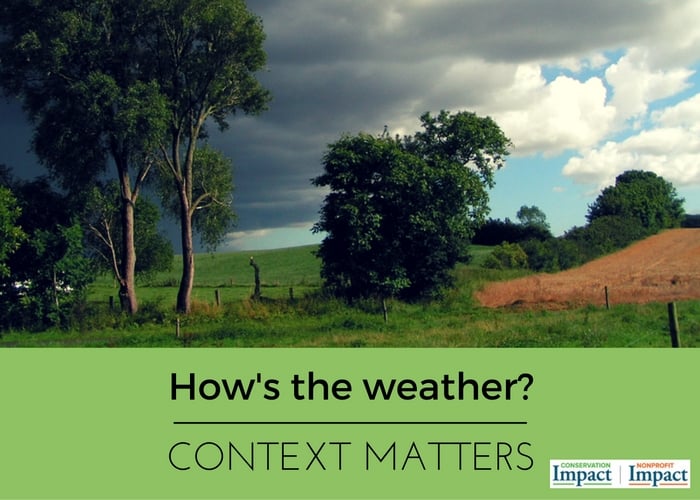
Context and Organizational Analysis
In our work with clients, we make a concerted effort to say what we actually mean. But jargon happens to everyone. It serves as handy verbal shorthand; a quick turn of phrase that communicates a lot of important things at once.
One phrase we use a lot at Conservation Impact is “context for decision-making.” In fact, if we’ve ever given you a proposal, that phrase in is there more than once.
“Context for decision-making” represents what we strive to bring to the table as consultants. It is our shorthand for how important we feel it is that organizations make deliberate decisions based upon a thoughtful analysis of relevant information.
And as a mission-driven operation, you have an obligation to make decisions based upon context rather than on incomplete or biased information, a hunch, or the desires of any one person. These are some internal and external factors we look at to understand a client’s context for decision-making.
Internal Factors
- Structure: How is the organization structured to do its work? Are roles and responsibilities clear?
- Competencies: What is this organization really good at? Where is it less skilled?
- Culture: What are the values, styles, tone, habits, etc. of this organization?
- Practices: How well does the way the organization does its work align with its goals and mission (can we get there from here?)?
- Systems: Does the organization have the systems it needs and are the systems strong and flexible? Do the systems support its work or create obstacles?
External Factors
- Larger trends and issues: What macro-level economic, demographic, political, or community situations affect the organization’s operating environment?
- Mission/ issue-related factors: For a water organization, this might include local environmental trends; for a public health agency, it might include what’s happening in the realm of healthcare reform
- Perceptions of external stakeholders and partners: How do partners/ stakeholders perceive this organization? What do they suggest it do differently?
- Market trends: What needs or issues are affecting this organization’s constituents? What is going on in the competitive environment?
Information vs. Analysis
Understanding your organization’s context means tracking information on relevant internal and external factors. But information without some analysis – without stepping back and asking, what does this all mean – just yields a laundry list. In next week’s post, we’ll explore what constitutes solid organizational analysis.
(image credit: Kenneth Pedersen)

